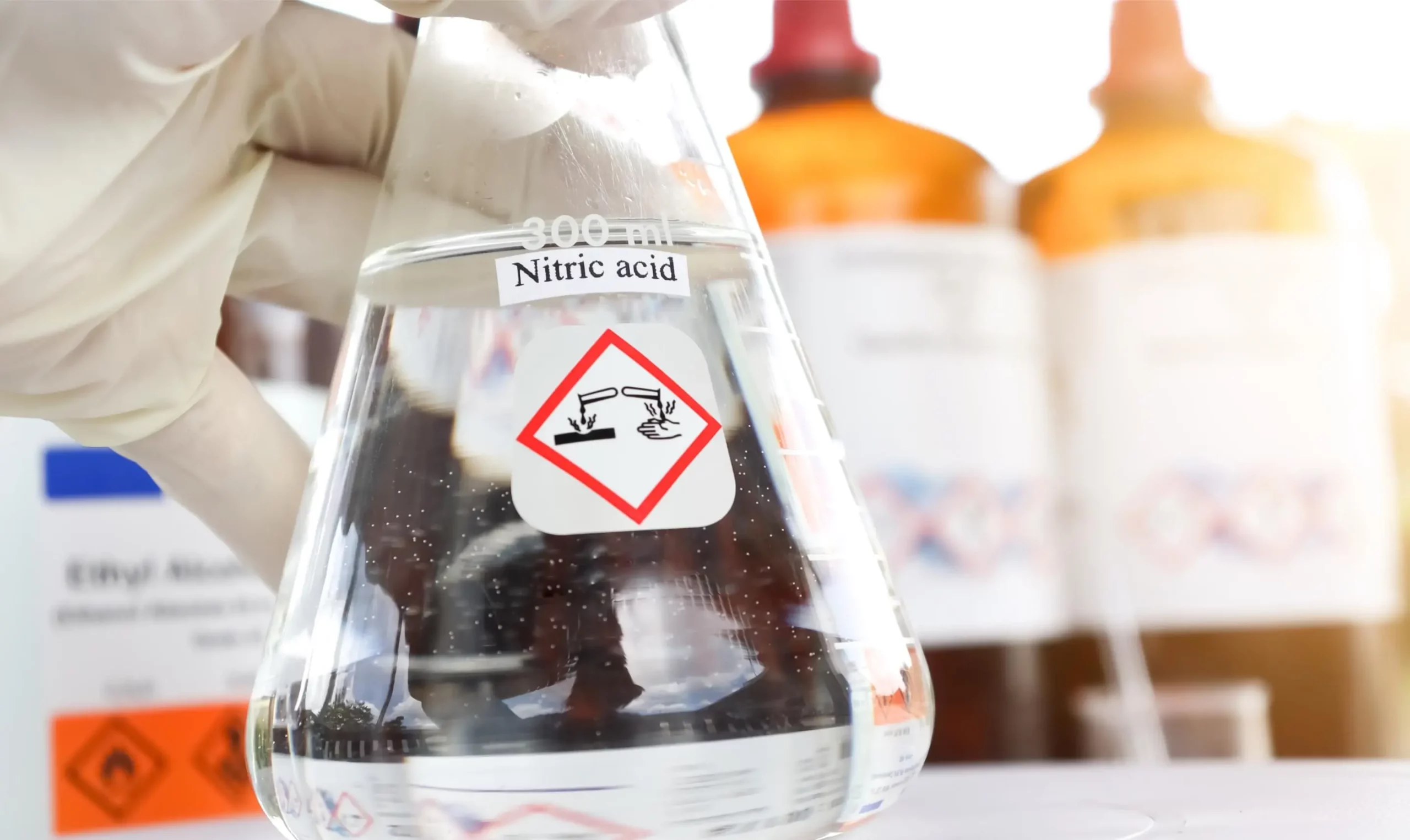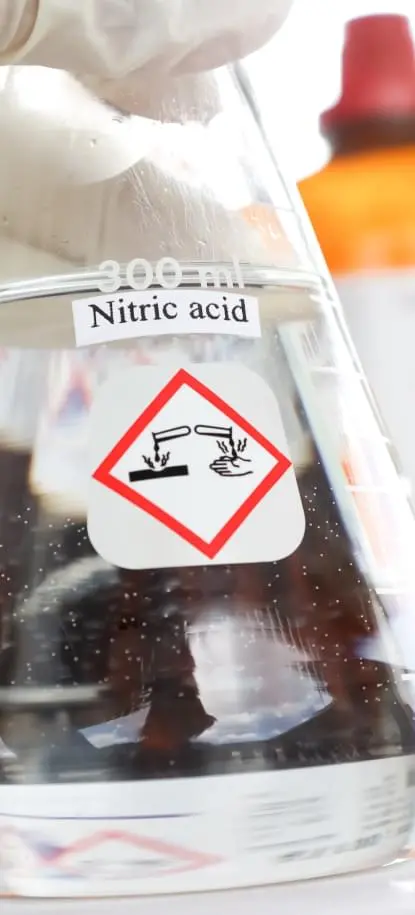Because of Nitric acidʼs ubiquitous use throughout many labs coupled with its oxidizing properties, many times it is accidently mixed with incompatible materials resulting in over pressurized containers, explosions, fires, etc. To drive home this point, one only need to do a simple google search for “another nitric acid accident” to see the immense number of incidents that happen due to people accidentally mixing nitric acid with organic materials.
Therefore it is critical to remember to never mix nitric acid with any organic material including organic acids unless you are purposefully trying to nitrate or oxidize it. See the attached video of nitric acid being added to ethanol to understand the reaction of nitric acid upon organic material. In addition when disposing of nitric acid (regardless of concentration) always be sure to ensure the waste container has no residual organic material in it or vice versa that you are not adding organic materials to nitric acid waste. Also never use spill pads/paper towels to cleanup a spill of nitric acid. Neutralize the nitric acid first.












